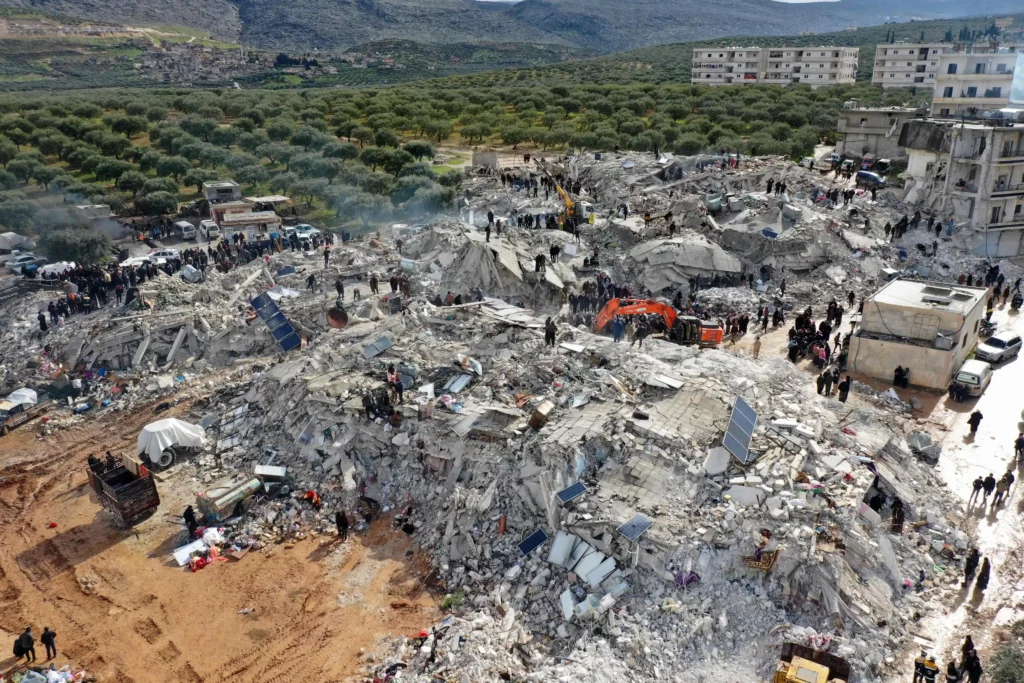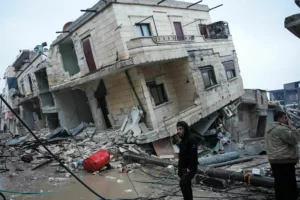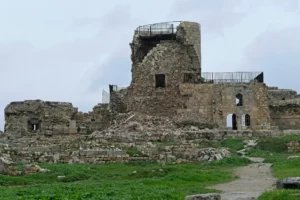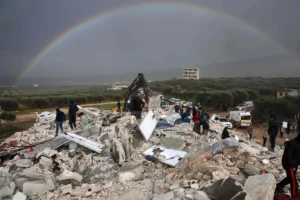“I know these places in Turkey and Syria” by Richard Wandschneider (Turkey)
Wall City of Diyarbakir—my “home” province for two years, from 1965-1967, and the city of the same name where I went to buy staples every week or two, went to talk with the agriculturalists and doctors who might do something in our village. Our village, Koprubasi, was about twenty kilometers on a good gravel road from the city. We went by shared minibus called a “dol-moosh.” (Dolmak is to stuff, like stuffed peppers and tomatoes—and minibuses.) Or we hopped in a wagon pulled by a tractor. The village had maybe 50 houses; Diyarbakir over 100,000 people, and the old, walled city—five kilometers of walls built over centuries by Assyrians, Armenians, Persians, Romans, Suljuk and Ottoman Turks, and Kurds—still exists alongside a new city, Yenisehir. A fortress next to the Biblical Tigris, the point at which that river is navigable. With its neighbor, the Euphrates, cradle of the Fertile Crescent, the place in the world that gave us wheat, barley, cows, melons, and pistachios. Genghis Kahn and the Mongols ravaged the lands, killed thousands, and destroyed the extensive irrigation systems in the Crescent. Diyarbakir, now home to over a million, and extensively damaged by the earthquakes, long at the center of Turkish-Kurdish conflict is considered the capital of Turkish Kurdistan.
I was a Peace Corps Volunteer in Diyarbakir.
Gaziantep—famous for “Gaziantep Fistik,” or “Antep Fistik”: pistachio. I once took a bus from Diyarbakir to Antep, crossed the border at Kilis, and from there went to Aleppo in Syria. Hundreds of thousands of the 3.6 million Syrian refugees from the Syrian Civil War now in Turkey are living—had been living—in Gaziantep.
Aleppo—I stayed in a hotel with Turkish speakers. I don’t remember now whether they were Kurds, Armenians, or Syrian Turkmen who had been there since Seljuk times. But we could talk, and they took me around the city, showed me the citadel and the “tel,” the hill that rose about the flatlands that had been built up over centuries from the remains of stone and adobe structures. The city had been flattened in the 12 year-long War in Syria, a holdout against President Assad, and is still part of Northern Syria that is under the various control of Turks, Kurds, the Syrian regime and Syrian rebels. When the earthquake hit, I was amazed to learn that there were still 2 million people in Aleppo.
Adiyaman—the home of Kemal, a driver and mechanic at the Peace Corps office in Ankara. Kemal lived in Ankara, but his heart was in Adiyaman. Adiyaman is flattened by the quakes.
Antakya—Antioch of the Bible, where the name “Christian” reputedly emerged. An important city of the Roman Empire, later part of Byzantium, and, eventually, of the Ottoman Turkish Empire. Antakya was part of a French mandate after World War I—the European powers having divvied up the lands of the former Ottoman Empire after that War—before becoming part of the new Turkish Republic. What I remember is beautiful mosaics on the floor of an ancient building open to the sky. A caretaker swept the sand from the mosaics to show them, and then covered them again against the weather. Antakya is totally crumbled and flattened in the TV reports.
RPCV Rich Wandschneider (Turkey 1965-67) Turkey Staff, 1968-70.




Thanks, good descriptive memories now clouded by horrific current events. Inshaallah.